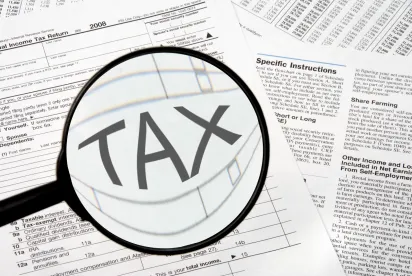The IRS recently issued TAM 201544025 (“TAM”) in which it held that a 501(c)(3) organization’s activities constituted unrelated business taxable income (“UBTI”). As explained in more detail below, UBTI may negatively impact the tax-exempt character of 501(c)(3) bonds.
You may already know that in order for interest on tax-exempt bonds to remain tax-exempt, the proceeds of such bonds cannot meet the “private business test”. (Yes, in this case, meeting the test is bad). As you may remember, there are two parts to the private business test: (a) the private business use (“PBU”) test , and (b) the private payment test. Governmental entities may generally use up to 10% of the proceeds from an issue of tax-exempt bonds for PBU without meeting the PBU test. However, 501(c)(3) organizations are only permitted to use 5% of the proceeds from a 501(c)(3) bond issue for PBU (and issuance costs count against the 5% limit) without jeopardizing the tax-exempt status of the 501(c)(3) bonds.
From a 501(c)(3) organization’s standpoint, UBTI is B.A.D. Not only is UBTI subject to federal income tax, but it results in PBU. In general, UBTI is defined as income derived by an otherwise tax-exempt organization (e.g., a 501(c)(3) organization) from an unrelated trade or business regularly carried on by it. Most organizations qualifying for 501(c)(3) status are organized and operated for religious, charitable, scientific, or educational purposes. An otherwise unrelated trade or business does not qualify as “related” to a 501(c)(3) organization’s primary purpose solely because the funds received from the unrelated trade or business are used by the 501(c)(3) organization to further its primary purpose.
The facts of the TAM are as follows. The subject entity (“X”), whose primary purpose was to develop and maintain an alumni association for a public community college, qualified for 501(c)(3) status. In addition to developing and maintaining an alumni association, X provided financial aid to students of the community college and helped pay for capital improvements at the community college.
X derived most of its revenue from a weekly event (the “Event”) held each weekend year round on the community college’s campus. At the Event, vendors sold arts and crafts alongside a farmer’s market and refreshment booths, while live entertainment was provided. All of these activities were set up each weekend (and taken down) in the parking areas of the community college. The Event was open to the general public free of charge, but X charged the vendors fees in order to set up shop at the Event each weekend. The vendors were responsible for providing their own tents, booths and equipment. A majority of the attendees at the Event each weekend were over the age of 55.
In the TAM, the IRS first addressed whether the operation of the Event was substantially related to X’s exempt purpose (of basically supporting the community college). X first argued that the Event was helpful in recruiting new students to the community college. The IRS did not find this argument persuasive, however, because X was not able to prove that attendance at the Event either increased the size of the student body at the community college or enhanced the community college’s reputation. Secondly, the IRS did not find X’s argument that the Event lessened the burdens of government to be convincing either. In reaching this conclusion, the IRS found no evidence that the community college felt obligated to sponsor and/or organize the Event, as it had never done so directly. In addition, the IRS also found it noteworthy in this regard that X did not receive any funding from the community college to help it run the Event. Finally, X argued (unsuccessfully) that the Event was substantially related to its purpose since it relieved the distress of the elderly by providing a social meeting place for them. Although the IRS noted that elderly persons may choose to socialize at the Event, there was no indication that the Event was conducted primarily for this purpose. For example, the IRS pointed out that the parking lot shuttles and entertainment programs provided at the Event were available to everyone, not just the elderly.
After losing its argument that the Event was substantially related to X’s exempt purpose, X argued that the fees paid to X by the vendors at the Event constituted rent from real property. (Rent from real property is generally excluded from UBTI.) The IRS found, however, that the vendors were not paying the vendor fees just to rent space in a parking lot. Rather, the IRS reasoned that the vendors were paying the fees in order to be part of an organized event that was set up, operated, and taken down each and every weekend. In addition, the IRS also noted that the services provided by X to the vendors at the Event went far beyond the typical utilities and janitorial services that are often rendered as part of leases of real property. For example, X: (1) staffed an information booth, (2) assisted customers who had complaints against a vendor, and (3) provided live entertainment, restrooms, and shuttle service from the parking lots to vendor areas.
So, in summary, it should be noted that raising money for a good cause can result in bad tax consequences, especially when the fundraiser provides a high-level of complimentary services. For example, if the community college in the TAM had used 501(c)(3) bonds to finance its parking lots, restrooms or grounds, the staging of the Event each and every weekend, which resulted in UBTI, would also have resulted in PBU. If there is too much PBU, and the private payment test is also met, the tax-exempt 501(c)(3) bonds could become taxable – providing more proof that “no good deed goes unpunished”.




 />i
/>i
